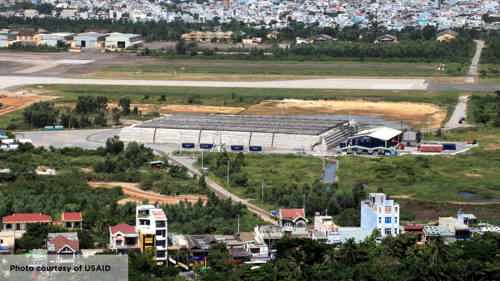Sites with coal tar, PAHs, PCBs, pesticides, dioxins, PFAS, heavy hydrocarbons, and mercury are tough to work on. The chemicals involved are hard to treat using traditional remediation methods, and sites with these contaminants are almost unaffected even by thermal treatments reaching the boiling point of water—the constituents have chemical properties that make them stable at relatively high temperatures.
Poly- and perfluoroalkyl substances (PFAS) for example are some of the best-known recalcitrant chemicals (we don’t call them “forever chemicals” for nothing). They are persistent in the environment and difficult to remove. Stockpiles of PFAS-contaminated soils are growing, and a permanent solution to remediate and clean these piles (and other source zones not yet addressed) is needed.
For these contaminants, treatment options are limited–but high temperature thermal conduction heating (TCH) is proven to be highly effective. During high temperature TCH, the soil temperature is increased above the boiling point of water. Soil temperatures above 500°C have been achieved in our high temperature projects, but typically reaching a temperature between 300 and 350°C is enough to reach low concentrations for even the most recalcitrant chemicals.
The Origin of High Temperature TCH
Our TCH technology was originally invented and developed back in the late 1980s by Shell TerraTherm to address and treat PCBs, PAHs, and other chemicals requiring high temperature treatment. Later in the early 2000s, TCH was modified by TerraTherm to target VOCs and other chemicals at temperatures at and below the boiling point of water. While thermal treatment at temperatures up to 100°C represents many of the thermal treatments completed to date, there are sites and chemical mixtures where high temperature TCH is still required to achieve site goals.

How High Temperature TCH Works
To achieve temperatures greater than 100°C, any water present in the soil must be removed or boiled off. Soils that extend below the water table must include some provisions for hydraulically isolating the treatment zone and controlling groundwater influx.
With the application of higher temperatures (>100°C) for treatment of higher boiling point constituents, a significant fraction of the contaminant mass may be destroyed in situ in the soil before reaching the treatment system. This can substantially reduce the loading and size of the treatment system. Contaminants that have not been destroyed in situ are removed from the heated soil in the vapor phase through vacuum extraction wells, and subsequently treated to appropriate emission standards in the treatment system.
High temperature TCH can be performed both in situ and ex situ in specially engineered above-grade soil piles. The use of TCH to heat and treat soil piles is also known as In-Pile Thermal Desorption (IPTD®).

PFAS Demonstration Opportunity
We are preparing to perform a state-of-the-art field pilot demonstration of TCH for the remediation of PFAS contaminated soil and have committed considerable resources to directly fund a substantial portion of the pilot demonstration.

Recent laboratory studies conducted by our partner Krüger have shown better than 99.99% removal of PFAS contaminants from soil using our high temperature TCH technology. Although PFAS were designed to resist heat, we know that at high enough temperatures (temperatures achievable with our TCH technology) they can be removed from the soil through both complete mineralization and volatilization and extraction. This is a promising potential solution for one of the most pervasive contaminants in the world.
Recalcitrant chemicals are hard—but not impossible—to treat. High temperature thermal technology is one of the most effective solutions available and working with an experienced TCH contractor ensures your project is optimized to achieve site goals.
If you’re interested in being a part of this ground-breaking project, contact me or my colleague John LaChance to learn more about this opportunity.
07.22.21
Steffen Griepke
Steffen Griepke is the Vice President of Technology at TerraTherm. In this role, he helps clients determine if a thermal remedy would work on their project site and, if so, which thermal technology or combination of technologies would be the most cost-effectiv...


